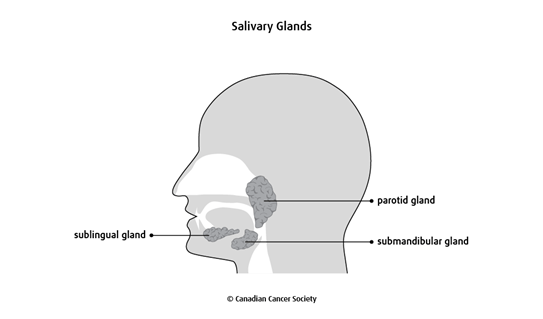What is salivary gland cancer?
Salivary gland cancer starts in the cells of the salivary glands. A cancerous (malignant) tumour is a group of cancer cells that can grow into nearby tissue and destroy it. The tumour can also spread (metastasize) to other parts of the body.

The salivary glands are found in the head and neck. They make and release a fluid called saliva. Cells in the salivary glands sometimes change and no longer grow or behave normally. These changes may lead to non-cancerous (benign) tumours such as pleomorphic adenoma and Warthin tumour. But in some cases, changes to cells in the salivary glands can cause cancer. The most common salivary gland cancer is mucoepidermoid carcinoma (MEC), which usually develops in a parotid gland. The second most common salivary gland cancer is adenoid cystic carcinoma, which usually develops in a minor salivary gland. Many types of rare types of salivary gland cancer can also develop. These include different types of carcinoma, adenocarcinoma and lymphoma.
The salivary glands
Cancerous tumours of the salivary glands
Non-cancerous tumours of the salivary gland
Your trusted source for accurate cancer information
With support from readers like you, we can continue to provide the highest quality cancer information for over 100 types of cancer.
We’re here to ensure easy access to accurate cancer information for you and the millions of people who visit this website every year. But we can’t do it alone.
Every donation helps fund reliable cancer information, compassionate support services and the most promising research. Please give today because every contribution counts. Thank you.
